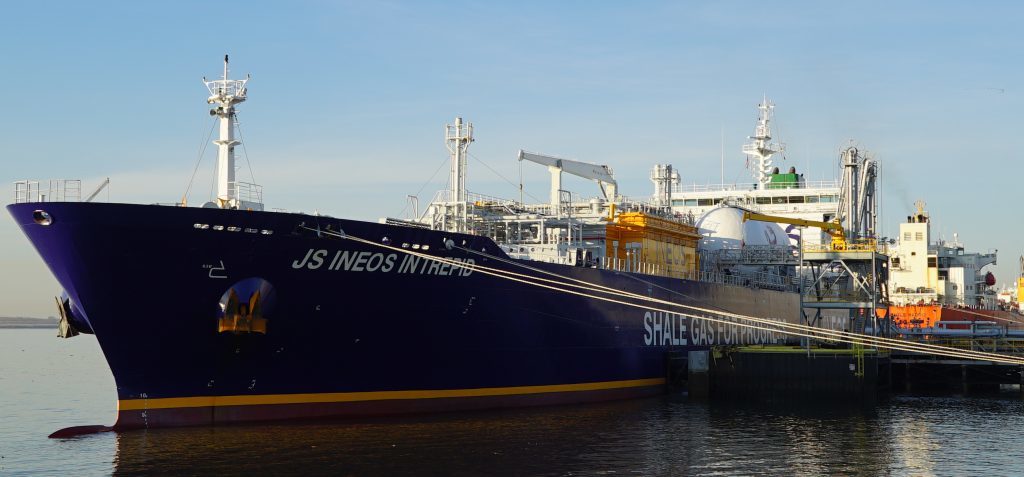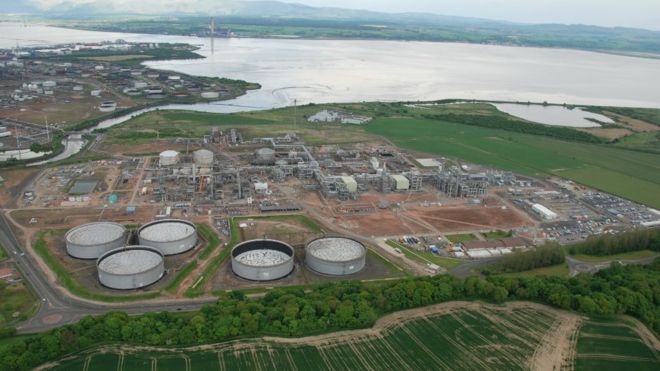
With BP’s sale of the Forties Pipeline System to Ineos, Unite warned that gave its chairman ‘the power to bring the UK to a standstill’. Mark Lammey reports
Ineos’s acquisition of the Forties Pipeline System was “always waiting to happen” from the moment the petrochemicals giant took over the Grangemouth refinery.
“When we started looking at oil and gas we didn’t own anything in the North Sea, so there were no synergies to look for; there was no existing infrastructure for us to tag things on to,” said Geir Tuft, chief executive of Ineos’s North Sea oil and gas subsidary, Ineos Breagh.
“But we have a longstanding relationship with Forties because we are the recipient of most of the gases that come out of the crude once it has been processed onshore at Grangemouth.
“When BP sold Grangemouth to Ineos they drew a line and said they wanted to keep Forties.
“But in many ways it’s always been one of those transactions that was waiting to happen. When they decided to exit we were an obvious buyer.”
Announced in April, the deal will give Ineos control of a pipeline which delivers about 40% of the UK’s North Sea oil and gas. The 235-mile Forties system links 85 North Sea oil and gas assets to the UK mainland and Grangemouth.
Ineos will pay BP £100million on completion and an earn-out arrangement over seven years that could total £100million. Ineos will also assume all decommissioning liabilities.
The transaction, which is expected to go through in the third quarter of 2017, prompted trade unionists to voice their concerns.
Unite Scottish secretary Pat Rafferty warned that the acquisition is bad for the UK because it would give one man, Ineos chairman Jim Ratcliffe, the power to “bring the UK to a standstill”.
Mr Rafferty has also voiced concerns about the welfare of employees who would transfer to Ineos.
Unite was embroiled in two major disputes with Ineos over the treatment of workers at Grangemouth in 2008 and 2013. During the second dispute, Ineos threatened to close the facility.
Ineos launched a staunch defence of its record at Grangemouth, saying it had transformed the refinery by investing more than £1billion since taking over in 2006, while also improving safety performance.
Ineos also used the Forties acquisition announcement to say it still intended to add more assets to its North Sea portfolio.
Ineos announced its arrival in the North Sea in 2015 when it bought 12 fields from Dea, the German-based oil and gas firm owned by the Russian oligarch-backed LetterOne Group.
The deal involved stakes in the Breagh and Clipper South gas fields in the southern North Sea.
Mr Tuft said the Dea transaction was not strictly in keeping with Ineos’s plans for going after oil major’s non-core assets.
The company recognised the UK continental shelf was mature, and that late-life management would present challenges.
But Ineos felt the time was right for making the plunge, as the drop in crude prices made the entry point less eye-watering and more assets became available.
“Majors wanted to step out of non-core assets in favour of looking at opportunities in other parts of the world, such as Mexico and Africa,” Mr Tuft said.
“So we started looking from that point of view. We bring a lot of experience in managing assets more efficiently and safely.
“In many ways, Dea was a departure from that strategy.
“Both assets were quite new,but they came with a fully functioning organisation, which was attractive.
“We had the ability to evaluate acquisitions, but in terms of subsurface drilling and decommissioning liabilities, we bought that knowledge from Dea.”
Mr Tuft said getting a foothold in the North Sea was not straightforward, despite the financial clout at Ineos’s disposal.
They faced many of the same obstacles other prospective North Sea buyers have come up against in the last few years.
He said: “We started looking at acquisitions for more than a year before Dea.
“But sellers still did not appreciate the elements needed to get these deals over the line.
“The deals we’ve seen this year contain creative elements, such as the retention of decommissioning liabilities, deferred payments and contingency payments.
“Industry was coming off a $100 oil price. Most of the world was saying it was a blip and that crude prices would be back to $80 to $90 soon.
“Now we have a consensus – $80 is not realistic so the valuation gap is much narrower. There’s an acceptance that we’re looking at lower for longer.
“If you look at the deal between Shell and Chrysaor and the size of that portfolio, if you get the oil price wrong by $10-$15 you go bankrupt.
“Contingent elements have allowed buyers and sellers to take out that risk.
“That has released a lot of new deals.
“Companies like Shell and BP are prepared to look at how they do deals and say we can have those elements.”
Ineos may come across as a big spender, but the company does like to think of itself as a savvy, frugal operator.
Mr Tuft said: “Everything is for sale, but you’ve got to do the deal that’s there at the time.
“Ineos is very opportunistic. If we buy, we need to know we can make money for our shareholders.”
The company flexed its M&A muscles again in May when it agreed to buy Dong Energy’s oil and gas business for £1billion.
The deal includes 50 licences in Denmark, Norway and the UK – equating to 100,000 barrels of oil equivalents per day.
It hands Ineos a 20% non-operated stake in Total’s Laggan Tormore project, a further 20% of Total’s Edradour-Glenlivet fields, which are due to come on stream, and a stake in Chevron’s Rosebank discovery.
A total of 440 Dong employees will transfer to Ineos as part of the deal, which is expected to close in the third quarter of this year.
Mr Tuft said Dong’s portfolio was attractive because it contained high quality assets and represented a “big step up in size for Ineos”.
“The Dea assets are also high quality and have a long life, but it’s not enough production,” he said.
“Dong provides growth in terms of producing assets and big projects that come with a full complement of organisational capabilities.
“It gives us subsurface knowledge west of Shetland, as well as Danish and Norwegian knowledge.
“They are good assets which are a good fit for us and the seller.”
Ineos is confident its expertise in petrochemicals can help it squeeze more out of the oil and gas assets.
“The assets we bought were not badly run but we go about things in a certain way,” Mr Tuft said.
“There are elements of offshore assets that are very similar to our onshore assets, such as compressors, which we know a lot about.
“On that level we are bringing valuable experience and our approach to costs is quite unique.
“When do we think something is too expensive? How much should a water purification plant cost? Why do things cost so much more offshore than onshore?
“There’s a lot of cash in oil and gas so people feel flush. That creates a lack of sensitivity as to when something is too expensive.
“Every penny we spend is scrutinised. It’s never a case of saying, ‘I can spend a certain amount of money because it’s in the budget and I’m a senior manager’.”
Mr Tuft said he felt North Sea industry was “on the right track”, but that the significance of cost savings delivered during the downturn was being exaggerated.
He said: “Cost per barrel has come down but a lot of that is due to supply chain deflation. It’s not a cost saving, it’s just a balance transfer.
“Working differently and standardisation have brought some results, but it’s mixed.
“Everyone knows we have to work differently, but the supply chain needs to make money. Were they making too much before if they were able to take out so much?
“I don’t think cost per barrel is an appropriate number. I’m more focused on the nominal cost – what is the actual cost of operating a field or a project?”
As for Ineos, what does the near-term future hold?
“I think you’re going to see continued growth,” Mr Tuft said. “One of the tenants of our petrochemicals success has been to squeeze more out of assets we’ve acquired.
“Translating that into oil and gas means carrying out infill drilling, near-field development and running the assets as hard as we can.”
Recommended for you

